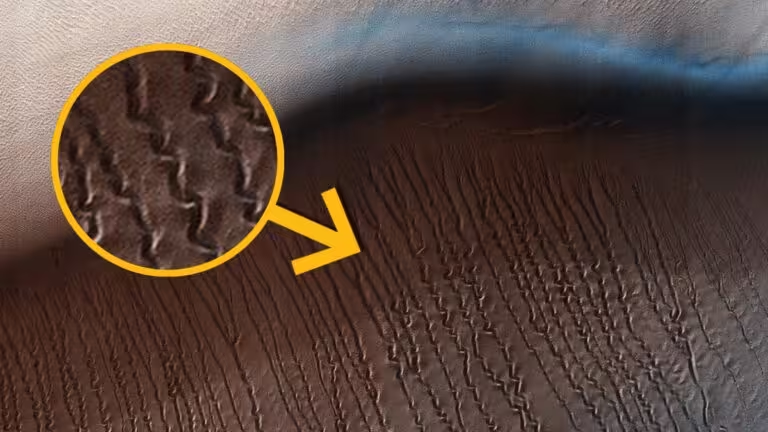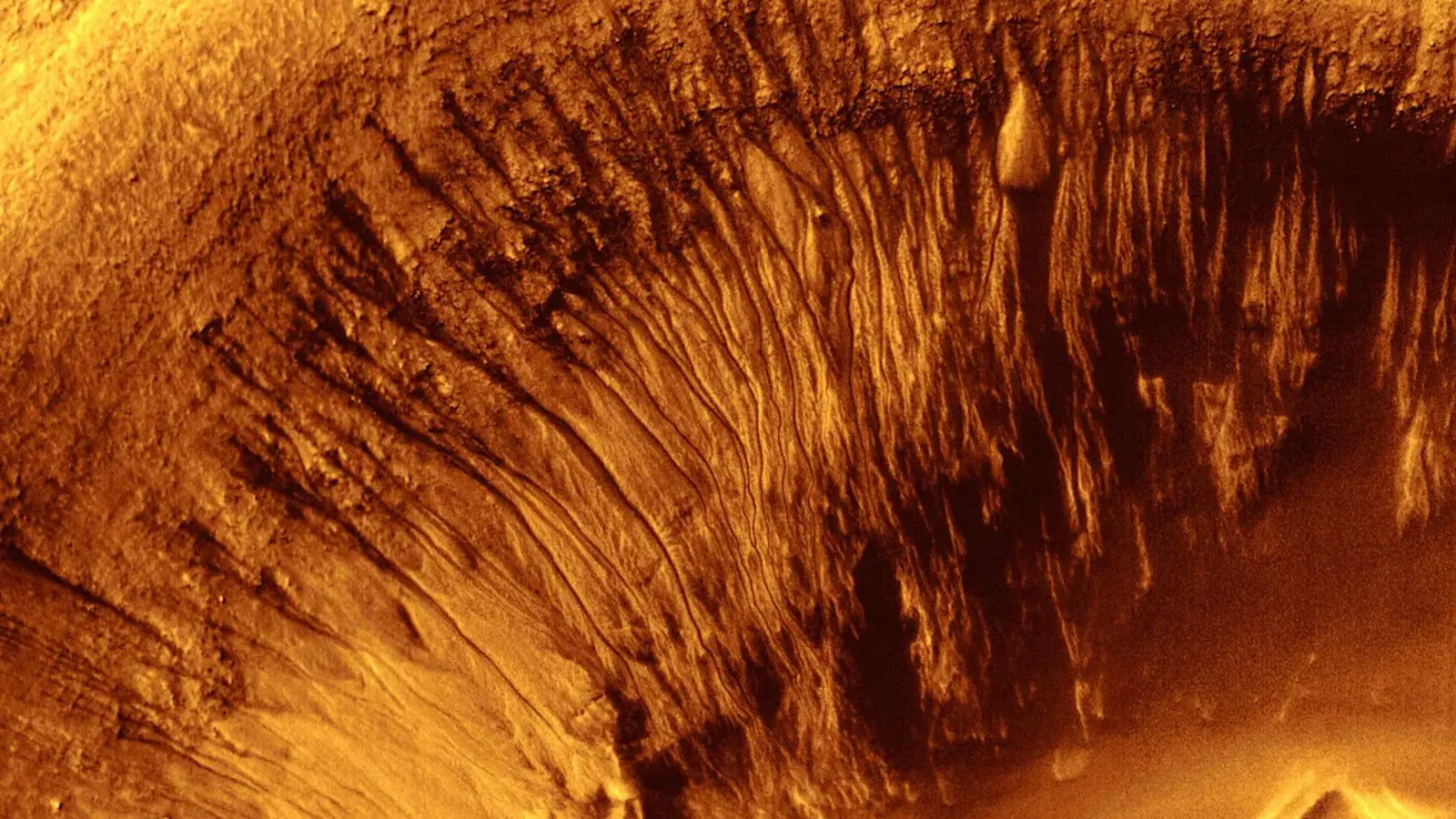5 Minutes
Strange, snake-like gullies that appear on Martian dunes each spring have long intrigued planetary scientists. New laboratory experiments now show that blocks of carbon dioxide ice — dry ice — can burrow through sand and blast it aside as they sublimate, reproducing the exact sinuous tracks seen from orbit.
Recreating Mars in a lab: the experiment that solved a mystery
Scientists at Utrecht University and collaborators returned to a Mars simulation chamber to test a puzzling idea: could seasonal CO2 ice explain those wavy gullies without any liquid water? Earlier work showed CO2 could move down steep slopes on a gas cushion, but it didn't reproduce the winding, leveed tracks visible on dunes. This new round of experiments varied slope angle, sand grain size and block size, recording each run with high-speed cameras under Mars-like pressure and temperature.
The results were striking. On slopes steeper than about 25 degrees, dry-ice blocks slid on a thin vapor layer and left diffuse scars. But on gentler slopes — below roughly 22.5 degrees — the blocks began to sink into the sand. As the underside warmed, CO2 sublimated (changed from solid to gas), building pressure under the ice and blasting grains of sand outwards. The buried blocks essentially tunneled downhill, leaving sinuous channels with raised levees and a small terminal pocket — features that match orbital images of Martian dune gullies.
Why CO2 behaves like a burrowing engine
Two physical properties make the process possible. First, dry ice is translucent to visible and near-infrared light: sunlight penetrates and warms the darker sand beneath. Second, the thin CO2 atmosphere and insulating ice block trap that heat under the ice, causing the buried interface to sublimate rapidly. With nowhere to escape, the gas erupts ballistically through the sand, ejecting grains and propelling the ice block forward or downward.

Scaled simulations incorporating Martian gravity indicate that blocks up to a meter thick could fling sand tens of meters — sufficient to produce the observed gullies. The mechanism also explains why the features appear only on fine-grained slopes: coarser material won't be lofted as easily by these gas bursts, nor will it let the ice embed and carve the same way.
Context: from initial water hypotheses to a CO2-driven process
When these gullies were first detected in 1999, some researchers suggested transient liquid water flows as a cause. But Mars' current surface conditions make flowing water implausible at the observed locations. The CO2 sublimation model, first proposed in 2013, has steadily gained support as new laboratory and computational work fills earlier gaps. These latest experiments are the first to reproduce the full suite of morphological details — sinuosity, levees, and terminal hollows — under controlled Mars-like conditions.
Implications for planetary geology and future study
Understanding how seasonal CO2 reshapes Martian dunes matters for several reasons. It clarifies active surface processes on a planet long considered geologically quiet, refines how scientists interpret imagery from orbiters, and helps prioritize sites for future missions by distinguishing abiotic features from those potentially tied to water. The researchers plan further tests with larger ice blocks and varied sand compositions to probe parameter ranges and to refine models that scale lab results to Martian conditions.
Expert Insight
Dr. Lonneke Roelofs of Utrecht University described the motion as eerily organic: she compared the blocks to burrowing animals, noting the way they carve channels as they sink and move. "We observed the CO2 block dig into the slope and advance like a burrower, then continue to sublimate and hollow out a pocket when it stopped," she said, emphasizing how the lab reproductions matched satellite observations.
Planetary scientists say the work also offers a broader takeaway: processes driven by volatile ices can produce surprisingly complex landforms, and studying them expands our understanding of landscape evolution across the Solar System.
What comes next
The team aims to test larger ice sizes and different grain textures, and to refine numerical models that predict how far ejecta travel under real Martian gravity. Continued monitoring from orbit — combined with targeted laboratory experiments — will help confirm whether CO2-driven burrowing explains all seasonal dune gullies, and whether other volatile-driven sculpting occurs elsewhere on Mars or on icy bodies.
Source: sciencealert
Comments
Armin
If CO2 blocks do this, why havent we seen fresh ejecta more often? seems plausible, but how frequent are these events and how big usually?
labcore
wow, CO2 acting like a burrower is wild. kinda spooky and awesome at once. never thought dunes could 'move' seasonally... hmm


Leave a Comment